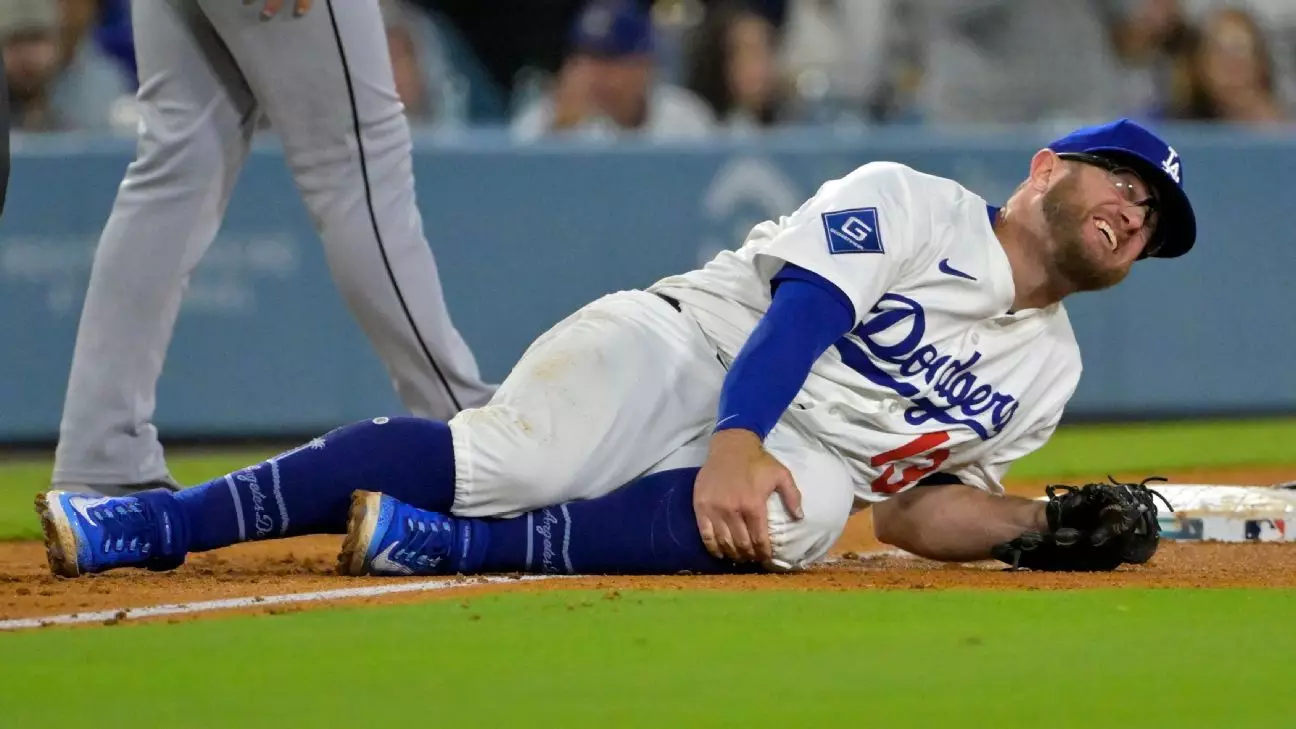In the high-stakes world of professional sports, injuries are often viewed as unforeseen obstacles that threaten not only a player’s physical health but also their mental resilience. The recent injury sustained by Los Angeles Dodgers’ stars illustrates this perfectly. Max Muncy’s collision with a rival player was dramatic, instantly bringing to the forefront the raw reality of athletic risk. Yet, what stands out in this scenario is Muncy’s response—not just to his injury, but to the news that gave him a sigh of relief: no structural damage. It underscores an essential truth—how athletes interpret and respond to injury can be just as vital as the injury itself.
The emotional rollercoaster that athletes endure when faced with injury reveals a complex layer of mental toughness. Muncy’s relief was palpable, yet his acknowledgment that six weeks is still a lengthy absence hints at the challenge of patience and perspective. This injury, while initially alarming, demonstrates the importance of understanding the body’s signals and managing expectations. It’s an affirmation that setbacks, while frustrating, are part of the journey—and how athletes cope with these hurdles often defines their long-term success.
Collisions and Consequences: The Fine Line of Competition
The incident was more than just a minor mishap; it was a reminder of the brutal intensity that professional baseball often entails. Muncy’s collision with Taylor during a steal attempt was a high-energy, aggressive play that can quickly spiral into disaster. Such moments expose the fine line between competitive daring and risking injury. For players, every slide, every collision, is an act of trust—trust that their body will withstand the contact and that their instincts will serve them well.
The aftermath, where Taylor bruised his back and still faced soreness, highlights the unpredictable aftermath of these physical confrontations. It’s a brutal truth that injury in baseball isn’t always a result of a single play but the culmination of countless micro-traumas accumulated over time. The fact that these events coincided with Clayton Kershaw’s historic achievement brought an ironic twist—reminding fans and players that even moments of glory are fragile and vulnerable to unforeseen setbacks.
Strategic Response and Team Dynamics: Rising from Adversity
Muncy’s injury management demonstrates strategic resilience. With the star player sidelined, the Dodgers swiftly adjusted their roster—calling up Esteury Ruiz and preparing Tommy Edman to fill in—showing a team’s capacity for agility in a crisis. The importance of depth in a roster becomes vividly clear in such moments; it’s not just about individual talent but the collective adaptiveness of the team.
Dodgers’ management and coaching staff show a pragmatic approach, focusing on long-term health rather than short-term fixes. They understand that every injury is an opportunity to evaluate lesser-used players and develop new strengths. Moreover, Muncy’s candidness about his disappointment, tempered with gratitude, adds a layer of authenticity to team leadership. It emphasizes the importance of cultivating a culture that acknowledges setbacks frankly while fostering a mindset geared toward perseverance.
The Bigger Picture: Injury as a Catalyst for Growth
Perhaps the most compelling insight from this incident is the resilient attitude that athletes like Muncy embody. Injuries are often perceived solely as setbacks, but they can serve as catalysts for personal and professional growth. The recovery process demands patience, mental strength, and strategic planning—traits that define truly exceptional athletes.
In a broader context, these experiences illuminate the importance of mental resilience not just in sports, but in life overall. Challenges shift from being purely physical hurdles to opportunities for introspection and reinvention. Muncy’s acknowledgment of the pain, his relief upon hearing the good news, and his willingness to face the inevitable return to play exemplify this transformative outlook. It underscores that setbacks are inevitable, but resilience transforms these moments into stepping stones toward a stronger, more prepared version of oneself.


Leave a Reply